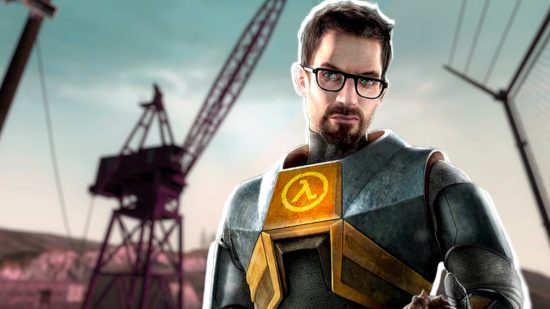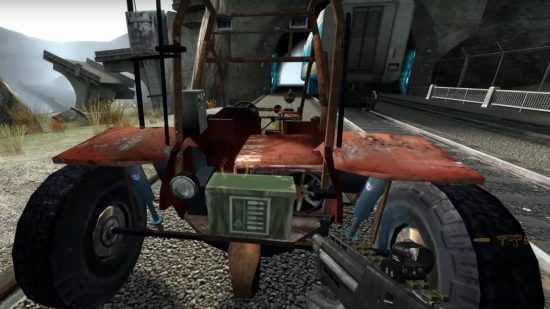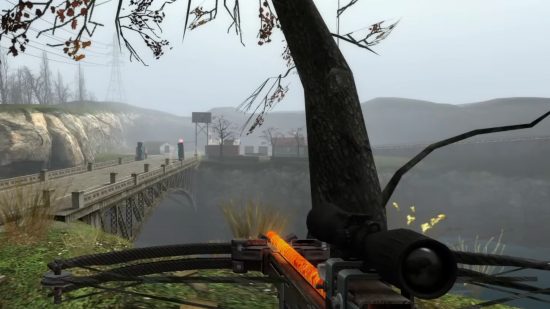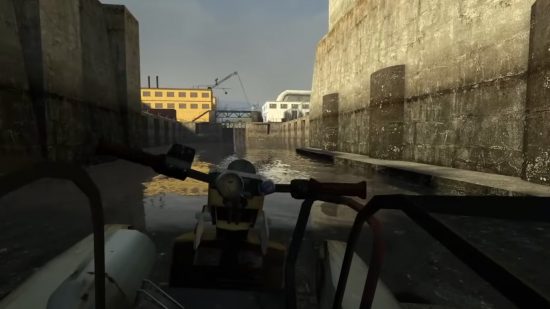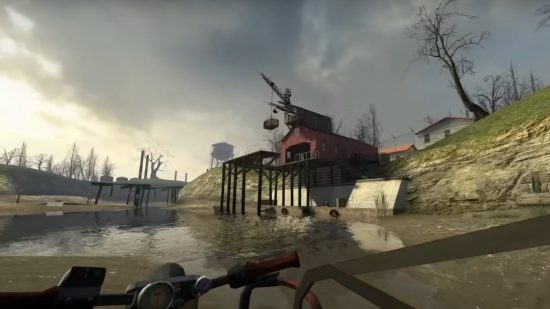Thankfully, in 2024, we’re broadly all enlightened enough to recognize Half-Life 2 as a genre-defining modern FPS. Generally, in the decades since its release, its entirely deserved status as one of the greatest games of all time (not to mention one of the most influential) has arguably obscured some critical judgment of Valve’s creation.
But just because criticism doesn’t come as easily as praise in this case, doesn’t mean there isn’t fertile ground for it. Like its predecessor and sequels, Half-Life 2 is a beautifully imperfect PC classic, and if you wanted to take on the thankless task of critiquing it, you could point to its flat gunplay or the fact that its vehicle levels – which make up a significant portion of the game – really, truly suck.
If you’re intimately familiar with Half-Life 2, chances are the words ‘Water Hazard’ and ‘Highway 17’ induce a stomach-churning feeling of dread. These are of course the game’s vehicle levels. Despite the facade of high-octane travel, both chapters see this otherwise dynamic, nimble game grind to a halt. There are, broadly, three discernible reasons for this.
The most obvious is that Half-Life 2’s vehicle chapters disregard the series’ fundamental strengths. Much of Half-Life’s success can be attributed to its grim, suffocating tone, and its use of detailed environmental storytelling that gives you the chance to inspect and observe every object around you while actively punishing carelessness.
Naturally then, despite the fact that you have a high-speed vehicle, when traversing the chapters you just can’t help but take your foot off the accelerator, snatch the keys out of the ignition, and hop out to check every box and inspect every crevice. This junks any feeling of momentum and makes the chapters drag on and on, resulting in an experience akin to running a sprint with a broken ankle.
The levels also abandon the claustrophobia that’s intrinsic to most of Half-Life. The oppressive atmosphere of City 17, the cramped air vents of Black Mesa, the winding streets and the overwhelming darkness of Ravenholm all thrive on a feeling that you, the player, are being utterly smothered. Conversely, Valve uses the airy, bright levels as a way to ease off the tension. It wants to shift gears from ‘existentially stressful’ to ‘less existentially stressful’ by letting you blast along the open landscape where it doesn’t feel like danger could be lurking around every corner. That’s an understandable desire. If each level was as relentlessly hellish as Ravenholm, the game would be fairly one-note. But abandoning the series’ defining traits to achieve that variation simply doesn’t work.
The second reason why Half-Life 2’s vehicle levels flop is because they’re so shockingly repetitive. Water Hazard and Highway 17 (the biggest culprit) both employ the same rinse-and-repeat formula. Just as you finally get up to speed, you have to stop, investigate a house, unblock an obstacle, and fight off a handful of waspish Combine units. This happens over and over again, and it’s numbing.
Related to this is the third and final reason: to distract from the monotony of the gameplay, both levels have an obvious over-reliance on cinematic (or otherwise distinctly memorable) moments as a crutch. Think back to the chapters and what you remember from them, chances are it relates to one such moment and has nothing to do with using the vehicles themselves.
Perhaps you remember investigating the abandoned resistance outpost known as Station 12, which has been shelled with head crab missiles. Or, in Highway 17, pinning the Overwatch soldier to the board with your crossbow. These (and others) are brilliant moments – but they’re just moments; plasters over the open wound of otherwise lackluster levels.
Recognizing that Half-Life 2 has flaws doesn’t make the FPS game any less impressive, and in some ways the weaker sections make the high points hit that much harder. If there’s any lesson for Valve to learn ahead of the increasingly unlikely Half-Life 3, it’s this: stop trying to make vehicle levels happen. Unless they’re set on a train, they just aren’t Half-Life.
